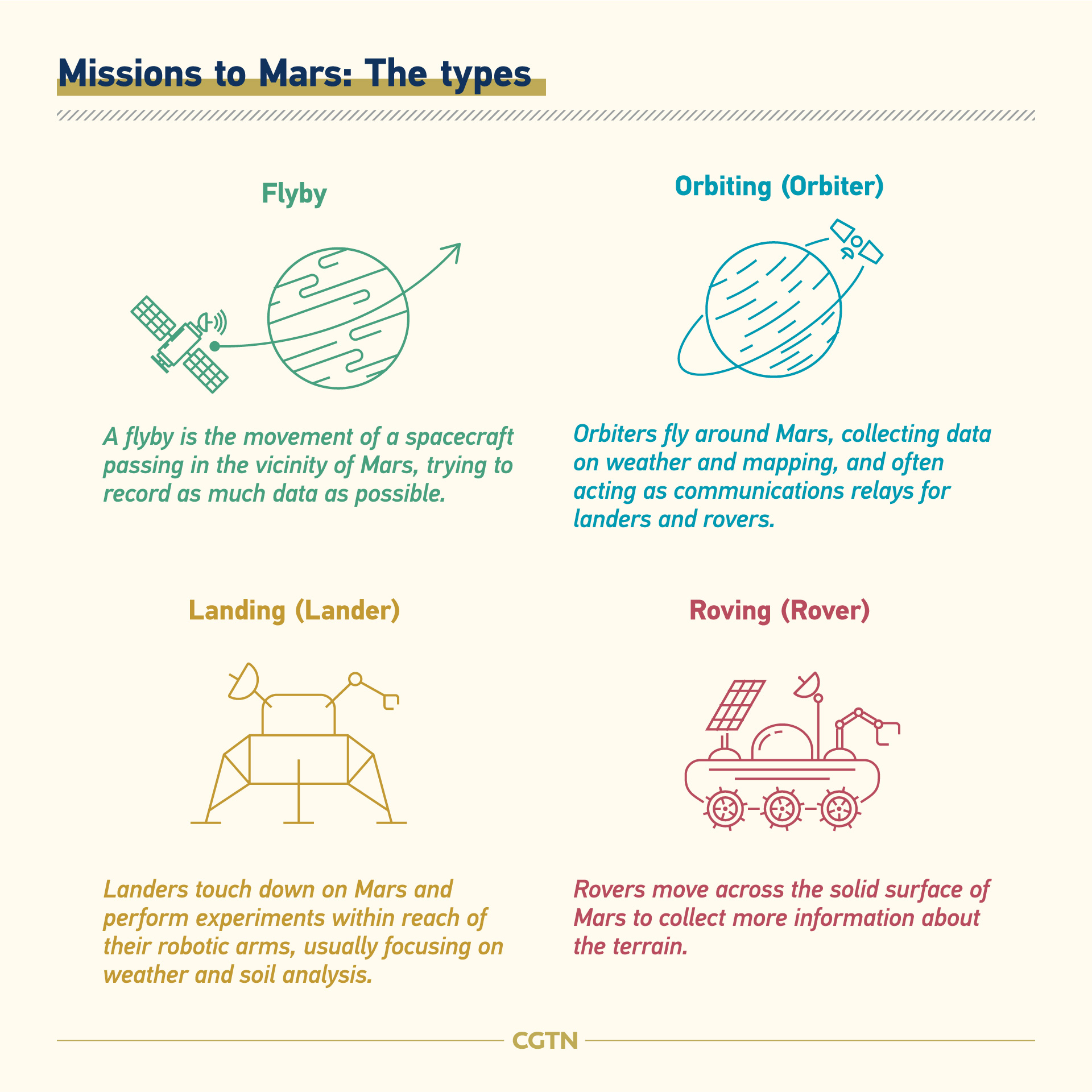China's Mars exploration has just raised the curtain with the liftoff of the Long March-5 rocket carrying the probe on Thursday.
Days before, the United Arab Emirates launched its Mars mission "Hope." Next up is the "Mars 2020" mission by the U.S which is slated for July 30.
Mars is one of the planets in the solar system that is closest to the Earth and has the most similarities to our natural environment. The red planet has always been one of the destinations in humans' space adventures.
Exploration started 60 years ago, when the first Mars probe was sent by the Union of Soviet Socialist Republics (USSR).

However, it wasn't until four years later that a flyby mission succeeded for the first time. The Mariner 4 sent by the U.S. in 1964 flew by Mars and took pictures of the planet from 10,000 kilometers away.
The USSR's Mars 3, launched in May 1971, was the first on Mars, making a soft landing on December 2, 1971. It sent only 20 seconds of data before breaking down. Mariner 9, launched by the U.S., became the first to enter the Mars orbit on November 14, 1971.
Actually, half of the attempts failed. As a result, Mars has been dubbed a "graveyard" for spacecraft.
The distance from Mars to the Earth varies from about 400 million kilometers to 56 million kilometers. Flying such a long distance demands rigorous technologies of launch, orbit, control, communication, power, orbit-entering and landing, according to Pang Zhihao, a Beijing-based expert in space exploration technology.
There have been four types of Mars missions so far, namely, flyby, orbiting, landing and roving.
The most difficult part of Mars exploration is landing on the planet.
The probe needs to reduce speed from 20,000 kilometers per hour to zero in seven minutes during the re-entry, descent and landing process, commonly known as "seven minutes of terror," said Pang. The process, he said, is as difficult as "shooting a golf ball in Paris to a hole in Tokyo."

China's Tianwen-1 aims to complete orbiting, landing and roving in a single journey.
Such a mission has a high starting point and high efficiency, but also big challenges, said Pang. "If successful, it will enable China to achieve leapfrog development in its deep-space exploration capability and level, making it the third country to land on Mars and the second to rove on the red planet."
The probe is expected to arrive at Mars around February 2021, when it will start the journey learning the red planet's atmosphere, landscape and geological and magnetic characteristics, which could provide clues to its origin and evolution as well as the solar system, according to Ye Jianpei, chief scientist of Space Science and Deep-space Exploration with the Chinese Space Technology Academy.
In future missions, China plans to bring Mars samples back to Earth.
Graphics: Chen Yuyang, Yin Yating